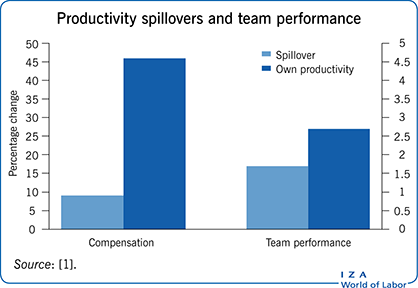Elevator pitch
Workers can contribute to total firm production directly through their own output or indirectly through their influence on the output of co-workers. Workers with positive productivity spillover effects cause individuals around them to perform better and increase overall team production. In contrast to the “peer effects” literature, workers with positive productivity spillovers may not be the workers with the highest levels of personal output. Such productivity spillovers are important for team success even though they play only a minor role in determining worker pay.
Key findings
Pros
Workers influence team performance through their own output and their influence on the output of co-workers.
Workers are generally not appropriately compensated for their influence on co-workers.
Positive productivity spillovers are not limited to high-productivity workers.
Cons
Productivity spillovers can be very difficult to measure and require high-frequency data on performance.
Traditional peer effects estimates may not identify productivity spillovers since high-performing workers can create negative productivity spillovers.
Determining the precise nature of a team’s production function—the physical output of their production process—has proven to be difficult.
